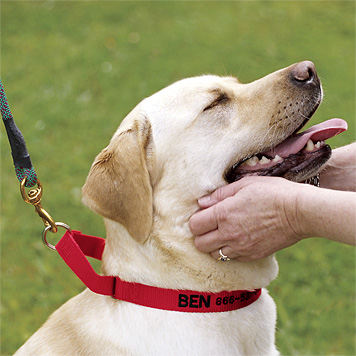
Learning what are hand signals for dog training can be an effective exercise
Many dog owners and trainers opt to use hand signals when training their dogs and subsequently when working with them because there are dogs that respond better to hand gestures than they do to verbal cues. Hand signals are used to prompt your dog to do what you want him to do, whether it is sit, stay or go retrieve that bird.
Some dogs may ignore a verbal command but respond to a hand signal. However, you can teach signals in conjunction with verbal commands. Furthermore, face it, it is pretty cool to see a dog respond to his owner’s hand signals, and the owner isn’t required to say a word. That’s impressive.
Additionally, if the dog knows that he is going to be given his commands via a hand signal he will focus more on his owner, because he has to see the hand signal in order to obey it, then he would if he were relying on verbal orders.
Hand signals also make it possible to communicate with a deaf or hearing-impaired dog.
When you use hand signals in conjunction with verbal commands this emphasizes the command. Hand signals come in handy if you and your dog are in a situation where there is a lot of noise, or if he is a far distance away from you and can’t hear your voice but can still see you. Dogs are quite capable of distinguishing even the slightest differences in hand signals from a distance.
If you decide that you are going to use hand signals with your dog, be consistent. You can’t change up the signals mid-stream. Decide what signal you are going to use for which command and stick to it. Doing otherwise will confuse your dog and render the hand signals ineffective.
Down and Stay
For example, if you want your dog to lie down you can lower your hand or point to the ground, and this is the “down’ command. Some dog trainers advise that you exaggerate your hand movements a bit. If you want your dog to stay, hold the palm of your hand out towards the canine as if you were commanding him to stop. Touch his nose with the palm of your hands. Your fingertips are pointed upward. This means “stay.”
Sit
When instructing your dog to sit, position your arm down to your side, with your hand pointing downward. Raise your arm and do so in a fashion that your hand moves right in front of your dog’s face and then up and over his head.
Come
If you want your dog to “come,” extend your left arm to the left and so that it is parallel to the ground and move your arm, slowly in front of your body. Touch your right shoulder with your left hand.
Heel
When teaching your dog to heel (which means he is to walk on your left side), tap your left thigh with your left hand. The dog will learn to come to your left side and stay there.
Off
If your dog keeps jumping on you, and you hate it, give him the “off” command. When he starts to jump say “off” and turn your back on him.
Watch
If you want your dog to watch you point to your eye with one or both of your hands until the dog makes eye contact with you. This is an excellent tool if your dog is deaf.
And when you are done training for the day ….
When you are done training or working with your dog, and he is free to do as he pleases throw your arms up in the air in a big, happy gesture, and this means “go free!” School’s out.
Some dogs may not respond well to hand signal training if they are temperamental or mean dogs. Hand signals, such as pointing, can be perceived by some dogs as a challenge or a gesture of intimidation. Those dogs that tend to be fearful or dominant may not adapt well to this type of training.
Resources:
Border Collie Rescue: advice
HuntingDog.com: dog training hand signals

